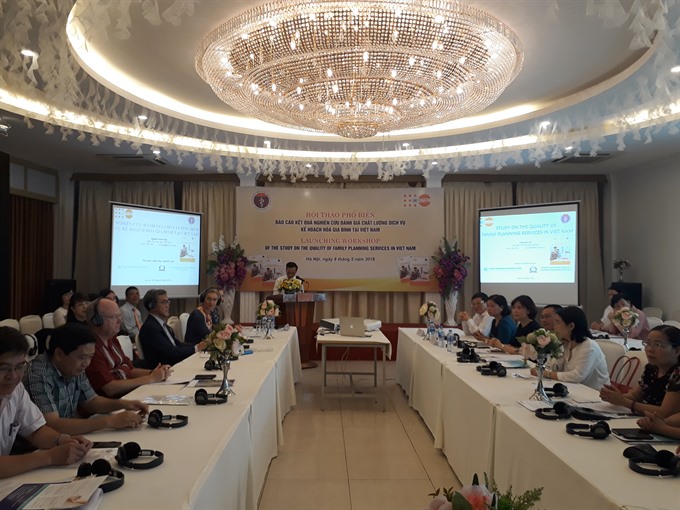 Society
Society

Maternal mortality rate in the country fell from 233 per 100,000 live births in the 1990s to 58.3 per 100,000 live births in 2016.
 |
| Representatives attend the study launching conference. — VNS Photo Thu Trang |
HÀ NỘI — Maternal mortality rate in the country fell from 233 per 100,000 live births in the 1990s to 58.3 per 100,000 live births in 2016.
Contraceptive prevalence rate (CPR), on the other hand, increased from 37 per cent in 1988 to 67 per cent in 2016.
These figures have been revealed in a study on the quality of family planning services in Việt Nam, which was launched in Hà Nội on Tuesday. The ceremony was organised by the Ministry of Health, with technical and financial support from the United Nations Population Fund (UNFPA) in Việt Nam.
The study is conducted by the Việt Nam Research and Training Centre for Community Development (RTCCD) in coordination with the Bangladesh Human Development Research Centre in 2015-2016 in 20 districts across the country. The study researchers interviewed nearly 6,000 women aged between 15 and 49 to implement the study.
The study aims at supplying updated and reliable evidence about family planning services in the country.
The intrauterine device was the most preferred contraceptive choice, making up 25.2 per cent, followed by the oral pill (19.3 per cent) and condoms (13.3 per cent).
CPR is higher in urban areas than rural areas. The highest CPR, found in the south-eastern region, is 27 per cent. The lowest CPR, in the Hồng (Red) River Delta, is 10.5 per cent.
Speaking at the ceremony, Deputy Minister of Health Nguyễn Viết Tiến said access to voluntary family planning was a basic human right.
“Investing in family planning is investing in health and rights of women and couples,” he said.
Trần Thu Hà, a researcher from the RTCCD, proposed that the General Office for Population and Family Planning should set up effective education campaigns to increase the use of contraceptive methods, especially in the southeast area.
More training should be given to specialised medical workers to give necessary consultancy to people and help them have the best choice.
Astrid Bant, UNFPA representative in Việt Nam, said achieving the world’s sustainable development goals by 2030 would depend significantly on how well the sexual and reproductive health and rights of women and youths were fulfilled.
Catering to their unmet need for family planning was among the most cost-effective investment overall, she said.
“UNFPA in Việt Nam is fully committed to supporting the government and people to ensure that universal access to health, including sexual and reproductive health, becomes a reality for all,” she added. — VNS




